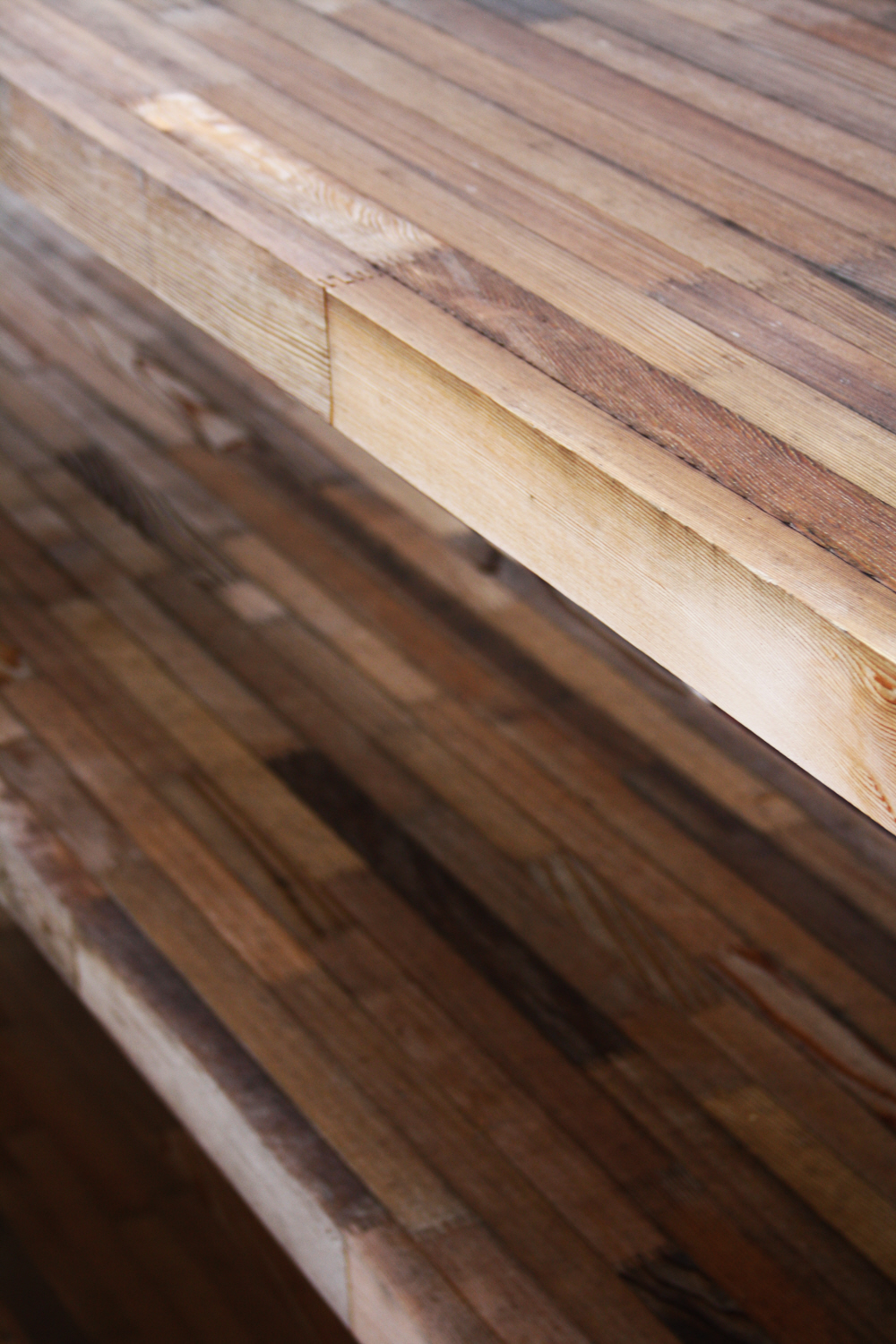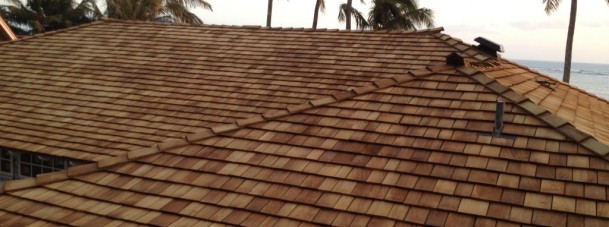The Properties of Cedar Wood
Image: Red cedar (image supplied by Simons Group - see Cheshire Oaks: Marks and Spencer).
Contents |
Introduction
Cedar is a type of coniferous wood, meaning that it is classified as a softwood and its cones/needles remain all year round. Cedar trees fall under the Cedrus genus and the Pinaceae family, which is the family of trees that is coniferous.
Only a couple of species of Cedrus exist in the world, but they exhibit certain traits that make them very popular.
Locations of Cedar
Cedar is particularly common in the western Himalayas and areas that surround the Mediterranean Sea. According to botanists, there are four types of cedar:
- Cedrus deodara – The deodar cedar – Western Himalaya.
- Cedrus libani – The Lebanon cedar – Lebanon and Turkey.
- Cedrus brevifolia – The Cyprus cedar - Cyprus.
- Cedrus altantica – The Atlas cedar – Morocco and Algeria.
These are the natural locations of the different species of cedar, but not the only places they can be found. In fact, the cultivation of cedars around the world has been very successful. Cedars can now be found around the entire Mediterranean region, western Europe, Australia, New Zealand, and North America.
Description of Cedar
Cedars are naturally found at high altitudes; over 1,500m in the Himalayas, and 1,000m in the Mediterranean.
Compared to a tree within the same family, such as pine, cedars are generally quite small. They typically grow to around 35m, but larger in some circumstances. They have a natural spicy scent, thick bark, and broad branches. The leaves of a cedar are needle-like and can grow up to 6cm long.
Uses of Cedar
Cedar wood and cedar oil are natural moth repellents, which is why cedar is commonly used for creating modern-day hope chests and closets that contain woollen clothes.
There are some types of cedar located in North America that are lightweight but also durable and highly stable. Because of this, it is used as wood shingles, which are tapered pieces of wood that clad roofs and walls to protect them from harsh weather.
Various types of cedar have a beautiful colour associated with them, but they are also resistant to warping and cracking, making them perfect for musical instruments. Instruments such as Spanish classical guitars and occasionally steel string guitars are made from cedar, however the type of cedar that is used is known as Western Red Cedar, which isn't a true cedar, such as the ones aforementioned.
Because of its resistance to warping, cedar can also be used for interior panelling in rooms around the house.
--G&S Specialist Timber 12:01, 13 Mar 2017 (BST)
Related articles on Designing Buildings Wiki
- 11 things you didn't know about wood.
- Aurora Log Homes.
- Bamboo.
- Bordeaux Law Courts.
- Cheshire Oaks: Marks and Spencer.
- Chip carving.
- CIBSE Case Study Olympic Velodrome.
- Cross-laminated timber.
- Definition of tree for planning purposes.
- Engineered bamboo.
- European Union Timber Regulation.
- Forest Stewardship Council.
- Natural materials.
- Pine wood.
- Pine leaves.
- Plywood.
- Programme for the Endorsement of Forest Certification.
- Scunthorpe Sports Academy.
- Shingles.
- Softwood.
- The Scientific Properties of Wood.
- Timber.
- Timber preservation.
- Timber vs wood.
- Tree preservation order.
- Tree rights.
- Types of timber.
- Walnut.
- Best Woods for Wood Carving
- Physical Properties of Wood
- The Differences Between Hardwood and Softwood
Featured articles and news
Professional practical experience for Architects in training
The long process to transform the nature of education and professional practical experience in the Architecture profession following recent reports.
A people-first approach to retrofit
Moving away from the destructive paradigm of fabric-first.
International Electrician Day, 10 June 2025
Celebrating the role of electrical engineers from André-Marie Amperè, today and for the future.
New guide for clients launched at Houses of Parliament
'There has never been a more important time for clients to step up and ...ask the right questions'
The impact of recycled slate tiles
Innovation across the decades.
EPC changes for existing buildings
Changes and their context as the new RdSAP methodology comes into use from 15 June.
Skills England publishes Sector skills needs assessments
Priority areas relating to the built environment highlighted and described in brief.
BSRIA HVAC Market Watch - May 2025 Edition
Heat Pump Market Outlook: Policy, Performance & Refrigerant Trends for 2025–2028.
Committing to EDI in construction with CIOB
Built Environment professional bodies deepen commitment to EDI with two new signatories: CIAT and CICES.
Government Grenfell progress report at a glance
Line by line recomendation overview, with links to more details.
An engaging and lively review of his professional life.
Sustainable heating for listed buildings
A problem that needs to be approached intelligently.
50th Golden anniversary ECA Edmundson apprentice award
Deadline for entries has been extended to Friday 27 June, so don't miss out!
CIAT at the London Festival of Architecture
Designing for Everyone: Breaking Barriers in Inclusive Architecture.
Mixed reactions to apprenticeship and skills reform 2025
A 'welcome shift' for some and a 'backwards step' for others.

























Comments
Hello,
Just wanted to let you all know that you have a picture of Red Cedar on this page, then your description of cedars mentions only the genus Cedrus, of which Red Cedar is not a member. Red cedar is not a "true" Cedar and is not in fact even in the pineceae family. It is in the Cupressaceae or "Cypress" family where most trees North Americans consider to be "Cedar" reside. I'm curious, where does "Cedar" lumber in North America come from? Which tree? North America has no native or naturalized true cedars so is wood here marked "Cedar" all Juniper? That is the answer I was looking for when I came to this site, it seems hard to find online.
Dylan Linet
[email protected]
Thank you for your observation. We suggest you contact the original author of this article, G&S Specialist timber. Please refer to their profile page (found here: G&S Specialist Timber) for contact information.
Editor, Designing Buildings Wiki